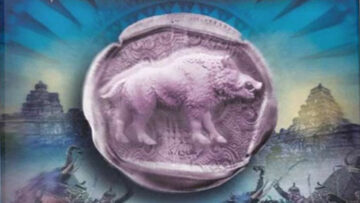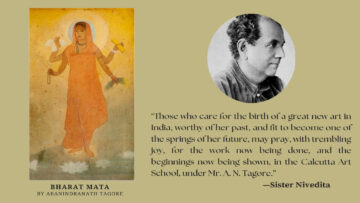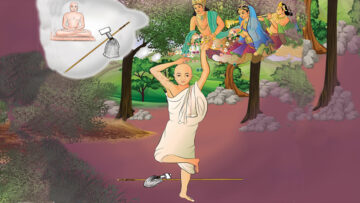Introduction to Akshaya Tritiya
Akshaya Tritiya, known as the third day of the waxing moon in the Vaishakha lunar month, is a time when the concept of ‘Akshaya’, meaning non-diminishing, takes centre stage. In modern times, this day is heavily promoted by jewellers and real estate marketers who suggest that buying gold or land on this day ensures that the wealth will not diminish. However, to grasp the true essence of Akshaya Tritiya, it’s vital to delve into the Dharmashastras for guidance on why this day is so significant.
Significance of Yugadi
Akshaya Tritiya is one of the four Yugadis observed annually, each marking a sacred beginning rather than a conventional new year. The term ‘Yuga’ here refers to the epochs , namely Krutayuga, Tretayuga, Dvaparayuga, and Kaliyuga. A text known as nirnayamrita describes the four auspicious starting days of these epochs:
माघे पञ्चदशी कृष्णा नभस्ये च त्रयोदशी।
तृतीया माधवे शुक्ला नवम्यूर्जे युगादयः॥
māghe pañcadaśī kṛṣṇā nabhasye ca trayodaśī।
tṛtīyā mādhave śuklā navamyūrje yugādayaḥ॥
The Amāvāsyā (new moon) day of māgha māsa, Bhādrapada-kṛṣṇa-trayodaśī, Vaiśākha-śukla-tṛtīyā and the Kārtīka-śuklānavamī tithīs are said to be the beginning of the four yugas.
This verse highlights the significant tithis, like Akshaya Tritiya, as starting points for these epochs. Although specific details on which tithi marks epoch’s beginning aren’t cited, these days, including Akshaya Tritiya, are considered highly auspicious.
Sacred Practices
During these auspicious times, performing sacred rituals is believed to bring infinite benefits. The nirnaya sindhu emphasizes this:
या मन्वाद्या युगाद्याश्च तिथयस्तासु माधव।
स्नात्वा हुत्वा च ज्प्त्वा अनन्तफलं लभेत॥
yā manvādyā yugādyāśca tithayastāsu mādhava।
snātvā hutvā ca jptvā anantaphalaṃ labheta॥
O Mādhava! on the occasion of Manvādi (beginning of the rule of Manu) and Yugādi, on those tithis, by bathing, offering oblations, and doing japa, one attains endless fruits.
This suggests that bathing in holy rivers, performing homas (fire rituals), and japa on these days can yield endless rewards. A particular reference in Prithvi chandrodaya also praises the merits of a sacred bath in the ocean:
युगादौ तु नरः स्नात्वा विधिवल्लवणोदधौ।
गोसहस्रप्रदानस्य कुरुक्षेत्रे फलं हि यत्॥
तत्फलं लभते मर्त्यो भूमिदानस्य च ध्रुवम्।
yugādau tu naraḥ snātvā vidhivallavaṇodadhau।
gosahasrapradānasya kurukṣetre phalaṃ hi yat॥
tatphalaṃ labhate martyo bhūmidānasya ca dhruvam।
In the beginning of the Yuga, a person, after bathing in the prescribed manner in the salty ocean, receives the puṇyam of giving a thousand cows in Kurukshetra. A mortal also gains puṇyam of land donation.
Here, it is said that taking a bath in the sea during Yugadi is as meritorious as donating a thousand cows in the sacred land of Kurukshetra, along with the benefits equivalent to donating land.
Worship and Offerings
On Akshaya Tritiya, it is especially auspicious to worship Lord Vishnu and offer a homa with yava-dhanya (a type of barley). The Bhavishyapurana lays out the practices for the day:
वैशाखे शुक्लपक्षे तु तृतीयायां तथैव च।
गङ्गातोये नरः स्नात्वा मुच्यते सर्वकिल्बिषैः॥
तस्यां कार्यो यवैर्होमो यवैर्विष्णुं समर्चयेत्।
यवान् दद्यात् द्विजातिभ्यः प्रयतः प्राशयेद्यवान्॥
vaiśākhe śuklapakṣe tu tṛtīyāyāṃ tathaiva ca।
gaṅgātoye naraḥ snātvā mucyate sarvakilbiṣaiḥ॥
tasyāṃ kāryo yavairhomo yavairviṣṇuṃ samarcayet।
yavān dadyāt dvijātibhyaḥ prayataḥ prāśayedyavān॥
In the bright fortnight of the month of Vaishakha, on the third day,
A person, after bathing in the waters of the Ganga, is freed from all pāpam.
His duty there is to perform the Homam with yava-dhānya and
worship Vishnu with yava-dhānya. He should offer yava-dhānya to the
Brahmins and then eat food prepared by yava-dhānya.
This verse encourages a purifying bath in the river Ganga, following which one should perform a homa and worship Vishnu with yava. Donating yava to the learned and consuming it is also recommended, particularly as it aids in coping with summer heat.
Dharma-ghaṭa-dānaṃ
The practice of Dharma-ghaṭa-dānaṃ holds significant importance on Akshaya Tritiya, symbolising the act of giving that aligns with the highest virtues of dharma. This tradition involves donating specially prepared pots, which are believed to confer blessings not only upon the receiver but also upon the giver, bringing about endless benefits.
Understanding Dharma-ghaṭa-dānaṃ
A Dharma-ghaṭa is essentially a pot filled with sacred and auspicious items. According to the Bhavishya Purana, these items can vary but generally include:
उदकुम्भान् सकनकान् सान्नान् सर्वरसैः सह।
यवगोधूमचणकान् सक्तुदध्योदनं तथा॥
ग्रैष्मिकं सर्वमेवात्र सस्यं दाने प्रशस्यते।
udakumbhān sakanakān sānnān sarvarasaiḥ saha।
yavagodhūmacaṇakān saktudadhyodanaṃ tathā॥
graiṣmikaṃ sarvamevātra sasyaṃ dāne praśasyate।
Donating vessels brimming with water, gold, a variety of flavored foods,
containers laden with yava, wheat, chickpeas, saktu, curd rice, and those filled
with summer harvest grains are considered auspicious.
Water: Symbolising purity and life-giving properties.
Gold: Representing wealth and prosperity.
Eatables with different tastes: Emphasising the nourishment and satisfaction of diverse needs.
Grains like yava-dhanya (barley), wheat, and chickpeas: Signifying sustenance and fertility.
Saktu (barley powder mixed with other grains) and curd rice: These are traditional foods known for their cooling effects and nutritional value, especially suitable for the summer season when Akshaya Tritiya typically occurs.
The act of donating a Dharma-ghaṭa is accompanied by specific mantras, which are recited to invoke the blessings of divine entities like Brahma, Vishnu, and Shiva, collectively known as the Trimurti. The recitation of these slokas is to be done while performing the act –
एष धर्मघटो दत्तो ब्रह्मविष्णुशिवात्मकः।
अस्य प्रदानात् तृप्यन्तु पितरोऽपि पितामहाः॥
गन्धोदकतिलैर्मिश्रं सान्नं कुम्भं फलान्वितम्।
पितृभ्यः सम्प्रदास्यामि अक्षय्यमुपतिष्ठतु॥
eṣa dharmaghaṭo datto brahmaviṣṇuśivātmakaḥ।
asya pradānāt tṛpyantu pitaro’pi pitāmahāḥ॥
gandhodakatilairmiśraṃ sānnaṃ kumbhaṃ phalānvitam।
pitṛbhyaḥ sampradāsyāmi akṣayyamupatiṣṭhatu॥
This vessel of Dharma (righteousness) is a representation of Brahma, Vishnu, and Shiva, May it satisfy even the forefathers and the ancestors. Filled with a mixture of scented water and sesame seeds, accompanied by fruits, I offer it to my ancestors. May they remain satisfied forever.
This chant emphasises the offering of the pot as a representation of the Trimurthis (Brahma, Vishnu, and Shiva). It expresses a desire that ancestors be satisfied with this. Here, for the first time, we come across the word “Akshaya’’.
Parashurama Jayanti: Celebrating the Warrior Sage on Akshaya Tritiya
Parashurama Jayanti, observed on the same day as Akshaya Tritiya, celebrates the birth of Parashurama, one of the ten avatars of Lord Vishnu. This event holds great significance in Sanatana culture, emphasising themes of justice, power, and renewal. Parashurama is a unique figure, a brahmin warrior with an axe, who played a pivotal role in transitioning between the Treta and Dvapara Yugas.
The Timing and Astrological Significance of Parashurama’s Birth
According to sacred texts like the Bhavishya and Skanda Puranas, Parashurama was born during the Vaishakha month on the Shukla Paksha Tritiya, under the Punarvasu Nakshatra. The timing of his birth is described in these verses:
वैशाखस्य सिते पक्षे तृतीयायां पुनर्वसौ।
निशायाः प्रथमे यामे रामाख्यः समये हरिः॥
स्वोच्चगैः षड्ग्रहैर्युक्तं मिथुने राहु संस्थिते।
रेणुकायास्तु यो गर्भादवतीर्णो हरिः स्वयम्॥
vaiśākhasya site pakṣe tṛtīyāyāṃ punarvasau।
niśāyāḥ prathame yāme rāmākhyaḥ samaye hariḥ॥
svoccagaiḥ ṣaḍgrahairyuktaṃ mithune rāhu saṃsthite।
reṇukāyāstu yo garbhādavatīrṇo hariḥ svayam॥
In the bright fortnight of the month of Vaishakha, on the third day, in Punarvasu nakshatra, During the first watch of the night, When Hari, known as Rama, In the constellation of Rahu, joined by the exalted six celestial bodies, Lord Hari himself descends from the womb of Renuka.
These verses detail that his birth occurred during the first ‘Yaama’ (a three-hour period) of the night. The astrological configuration at his birth, with six planets in exalted positions and Rahu in Mithuna (Gemini), is noted to be extraordinarily powerful and auspicious.
Reflecting on the True Essence of Akshaya Tritiya
A comprehensive exploration of Akshaya Tritiya’s origins and its profound significance sheds light on the authentic practices that define this auspicious day. The term ‘Akshaya’ suggests an unending abundance, a theme that is woven deeply into the day’s traditional observances. These include taking snāna – sacred baths, dāna – offerings (charity), performing japa (chanting of mantras), and conducting homa (fire rituals). Engaging in these sacred activities promises rewards that are everlasting, embodying the very essence of ‘Akshaya’—that which never diminishes.
Contrary to modern commercial influences that promote the purchase of gold and property as central to the celebration of Akshaya Tritiya, the traditional scriptures and practices emphasise a different kind of wealth. On this day, the focus is not on acquiring material riches but on distributing generosity and kindness.
This perspective invites us to participate in at least one of these venerable activities, aligning with what we are capable of offering without strain. Whether it is through a simple act of giving food to the needy, spending time in spiritual reflection, or participating in community services, each effort contributes to a greater collective good. By doing so, we not only adhere to the rituals but also foster a deeper connection with our dharma—our righteous duty.
As we observe Akshaya Tritiya, let us embrace the opportunity to rediscover and reaffirm our pride in Dharma. This is a chance to remember that true wealth is not measured by what we accumulate but by what we generously share with the world around us. In this sharing, we find infinite rewards that enrich not just ourselves but also our communities and future generations.
The verses above are from Bhaṭṭa, Kamalākara. (2019 pp. 134–139). Nirṇaya sindhu [Sānskrit]. Khemraj Śrīkṛṣṇa Dās. Available here.
Disclaimer: The opinions expressed in this article belong to the author. Indic Today is neither responsible nor liable for the accuracy, completeness, suitability, or validity of any information in the article.










